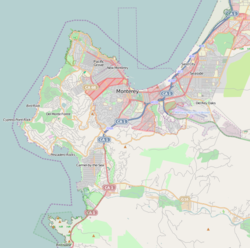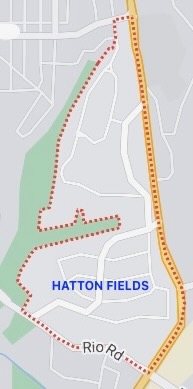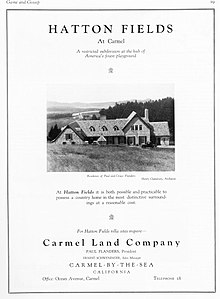
Carmel-by-the-Sea, often simply called Carmel, is a city in Monterey County, California, United States, founded in 1902 and incorporated on October 31, 1916. Situated on the Monterey Peninsula, Carmel is known for its natural scenery and rich artistic history. In 1906, the San Francisco Call devoted a full page to the "artists, writers and poets at Carmel-by-the-Sea", and in 1910 it reported that 60 percent of Carmel's houses were built by citizens who were "devoting their lives to work connected to the aesthetic arts." Early City Councils were dominated by artists, and several of the city's mayors have been poets or actors, including Herbert Heron, founder of the Forest Theater, bohemian writer and actor Perry Newberry, and actor-director Clint Eastwood, who served as mayor from 1986 to 1988.

Carmel Valley is an unincorporated community in Monterey County, California, United States. The term "Carmel Valley" generally refers to the Carmel River watershed east of California State Route 1, and not specifically to the smaller Carmel Valley Village. For statistical purposes, the United States Census Bureau has defined Carmel Valley as a census county division (CCD), with an area covering approximately 189 square miles (490 km2). At the time of the 2020 census the CCD population was 6,189. In November 2009, a majority of residents voted against incorporation.
Rancho Cañada de la Segunda was a 4,367-acre (17.67 km2) Mexican land grant in present-day Monterey County, California given in 1839 by Governor José Castro to Lazaro Soto. The grant extended along the north bank of the Carmel River, from the Pacific coast and present day Carmel-by-the-Sea up into the Carmel Valley.

Mission Ranch is a historic hotel and restaurant in Carmel-by-the-Sea, Monterey County, California, United States. It is located south of downtown Carmel, near the Carmel Mission, at 26270 Dolores Street. The property was bought in 1986 by Clint Eastwood, who restored the premises in the style of the original buildings. The Mission Ranch includes 22-acre (0.089 km2) with views of Point Lobos, Carmel River Beach and the Pacific Ocean. The Hotel has 31 rooms located within ten buildings on the property.

Carmel Woods is an unincorporated community in Monterey County, California, United States. It is located adjoining the northern city limits of Carmel-by-the-Sea and adjacent to Pebble Beach. Carmel Woods was laid out in 1922 by developer Samuel F. B. Morse (1885-1969). It included a 25-acre (0.10 km2) subdivision with 119 building lots. Carmel Woods was one of three major land developments adjacent to the Carmel city limits between 1922 and 1925. The other two were the Hatton Fields, a 233 acres (94 ha) between the eastern town limit and Highway 1, and the Walker Tract to the south, which was 216 acres (87 ha) of the Martin Ranch called The Point.

Outlands in the Eighty Acres, also known as Flanders Mansion is an 8,000-square-foot Tudor Revival house. It is significant as a work of architect Henry Higby Gutterson and for its innovative construction with light grey interlocking Precast concrete blocks. The mansion is preserved within the Mission Trail Nature Preserve in Carmel-by-the-Sea, California. It was listed on the National Register of Historic Places on March 23, 1989.

Honoré Escolle, was as a French businessman from Monterey, California. He was an early pioneer who became a significant landholder in Monterey County. In 1878, he purchased 1,400 unsettled acres (570 ha) acres of the Sanchez's ranch near Gonzales, California. In the late 1880s, he sold 324 barren acres (131 ha) to Santiago J. Duckworth to build a Catholic Summer resort. This land later became Carmel-by-the-Sea, California

The Seven Arts Building, is a one-and-one-half-story, commercial building in downtown Carmel-by-the-Sea, California. It was built in 1925, for poet mayor Herbert Heron. The building was designated as a significant commercial building in the city's Downtown Historic District Property Survey, and was recorded with the Department of Parks and Recreation on January 31, 2003. The building has been occupied by the Carmel Bay Company since 1972.

The Schweninger Building is a historic mixed-use commercial building in Carmel-by-the-Sea, California. It was built in 1899, by Artie Bowen for Fritz Schweninger. It is an example of Vernacular style. The structure is recognized as an important commercial building in the city's Downtown Conservation District Historic Property Survey, and was nominated and submitted to the California Register of Historical Resources on July 25, 2002. The building has been occupied by the Carmel Bakery since 1899.
The following is a timeline of the history of Carmel-by-the-Sea, California, United States.

Carmel Point also known as the Point and formerly called Point Loeb and Reamer's Point, is an unincorporated community in Monterey County, California, United States. It is a cape located at the southern city limits of Carmel-by-the-Sea and offers views of Carmel Bay, the mouth of Carmel River, and Point Lobos. Carmel Point was one of three major land developments adjacent to the Carmel city limits between 1922 and 1925. The other two were Hatton Fields, 233 acres (94 ha) between the eastern town limit and Highway 1, and Carmel Woods, 125 acres (51 ha) tract on the north side.
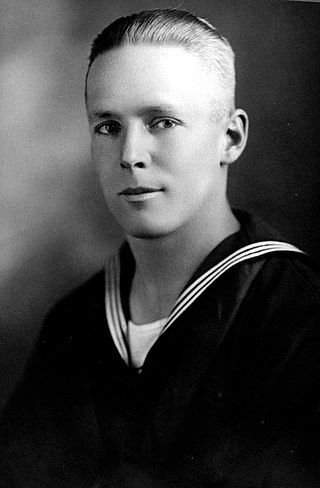
Ernest Seraphin Schweninger was an American actor and grocer in Carmel-by-the-Sea, California. His parents built the Schweninger Building in 1906, known today as the Carmel Bakery. Schweninger was founder and charter member of the Carmel American Legion Post No. 512. He was the owner of the Schweninger's Grocery and first Carmel Bakery on Ocean Avenue. He appeared in many of the early plays at the Forest Theater and Theatre of the Golden Bough. He became a partner and sales manager for the Carmel Land Company that helped develop Hatton Fields, southeast of Carmel-by-the-Sea.

Paul Aiken Flanders, was an American businessman, real estate developer, and Lieutenant in the United States Navy. He developed Outlands in Carmel-by-the-Sea, California that is listed on the National Register of Historic Places. He founded the Carmel Land Company that developed Hatton Fields, an unincorporated community southeast of downtown Carmel-by-the-Sea.
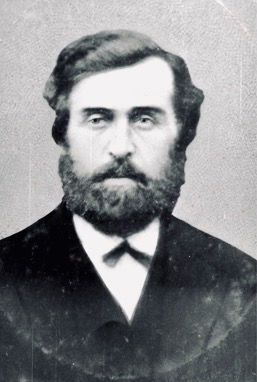
John Martin, was an early pioneer of Monterey County, California. In 1859, he purchased 216 unsettled acres (87 ha) near the mouth of Carmel Valley near today's Carmel Mission, before the development of Carmel-by-the-Sea. The Martin homestead is now called Mission Ranch. It was bought in 1986 by Clint Eastwood, who restored the farmhouse, cottage, and barn in the style of the original buildings.

Franklin Benjamin Porter, was a pioneer businessman and real estate developer of Monterey Peninsula. In 1926, he launched the first residential subdivision in Carmel Valley, California that became Robles del Rio, California. Porter went on to develop other properties in the valley including the Robles del Rio Lodge, Robles del Rio Carmelo Water Company, and the Hatton Ranch in Carmel Valley.

William Hatton was an American businessman who was one of Carmel Valley, California's pioneers. He was manager of the dairy and cattle interests of the Pacific Improvement Company, acquired land of his own, and became one of the wealthiest dairymen in Monterey County.

James Meadows, was an English-born immigrant who moved to California in 1838. He was the oldest pioneer in Monterey County, California at his death. He donated land and helped build the Carmelo School, which was the earliest school in Carmel Valley, California. His daughter, Isabel Meadows, was an Ohlone ethnologist and the last fluent speaker of the Rumsen Ohlone language.
James Meadows Tract, also known as Rancho Palo Escrito, was a 4,592 acres (1,858 ha) Mexican land grant in present-day Monterey County, California given on January 27, 1840, by Governor Juan Alvarado to Carmel Mission civil administrator, José Antonio Romero. The land was later sold by Monterey businessman Thomas O. Larkin to English-born James Meadows (1817–1902) in 1848. The grant extended along the Carmel River and Carmel Valley, bounded by Rancho Cañada de la Segunda to the west, Rancho Los Laureles to the east, and Garland Ranch Regional Park to the south. Meadows received the legal land patent on August 9, 1866, that became known as the Meadows Tract for 4,591.71 acres (1,858.20 ha).

Gunnar Norberg, an American businessman and politician, dedicated thirty years of his life toward the preservation of Carmel-by-the-Sea, California, United States. He was recognized as the "Conscience of Carmel," because he fought against unrestricted growth in Carmel. Norberg served two terms as a city councilman and two terms as mayor.
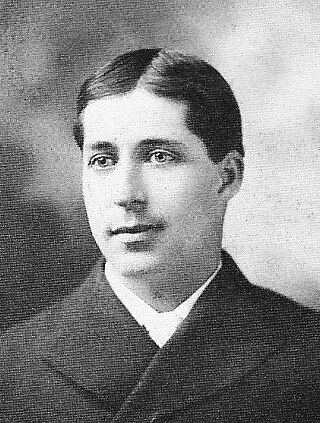
Fred Ruhl, was an American building contractor in Monterey County, California. He had an influence on the character and architecture of Pebble Beach, California, and Carmel-by-the-Sea, California, during his career. Ruhl built the mansion, Outlands in the Eighty Acres, for real estate developer Paul Aiken Flanders. He also worked with architect Robert Stanton to build the historic Normandy Inn on Ocean Avenue in Carmel.

